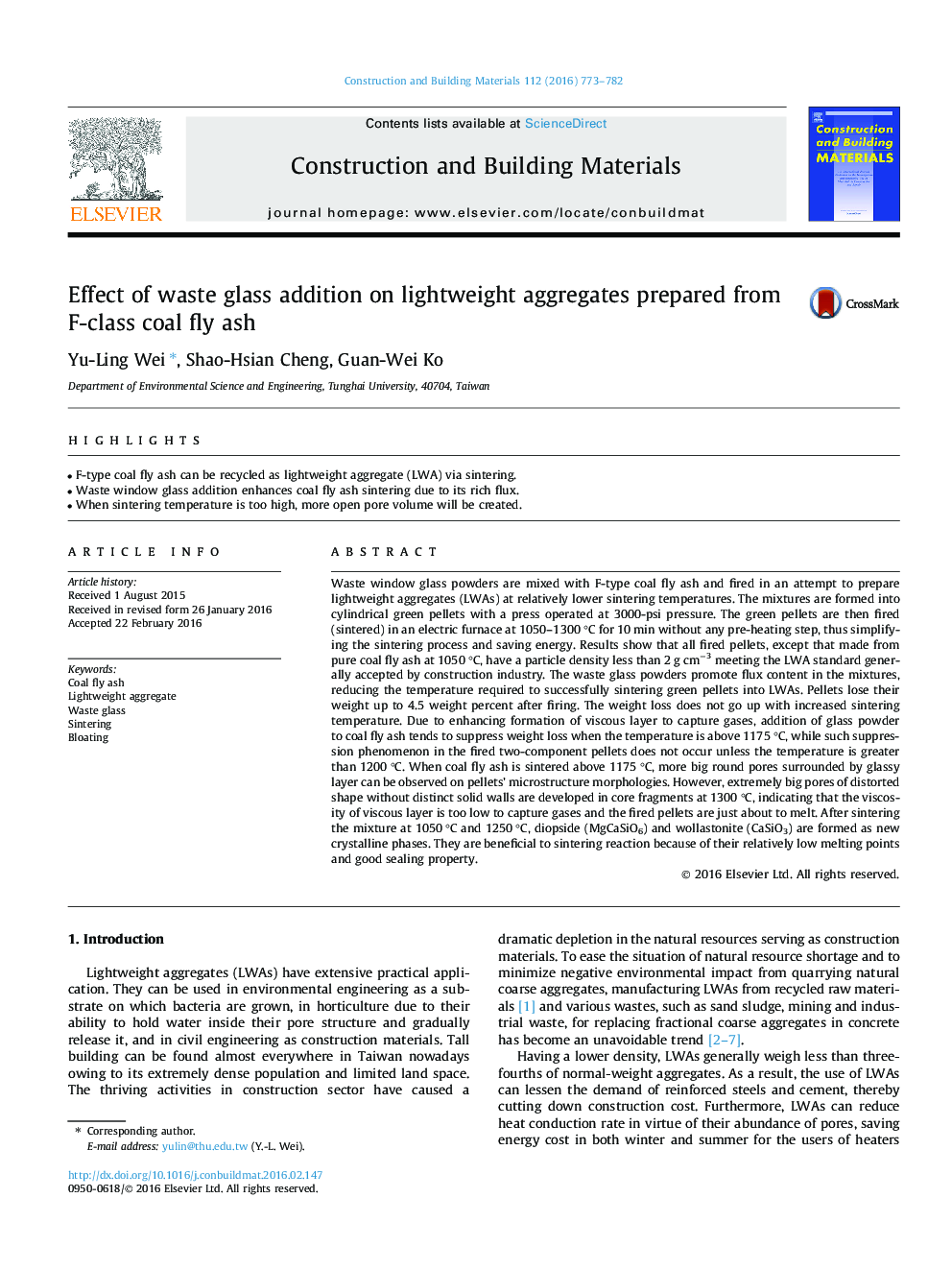| Article ID | Journal | Published Year | Pages | File Type |
|---|---|---|---|---|
| 6719320 | Construction and Building Materials | 2016 | 10 Pages |
Abstract
Waste window glass powders are mixed with F-type coal fly ash and fired in an attempt to prepare lightweight aggregates (LWAs) at relatively lower sintering temperatures. The mixtures are formed into cylindrical green pellets with a press operated at 3000-psi pressure. The green pellets are then fired (sintered) in an electric furnace at 1050-1300 °C for 10 min without any pre-heating step, thus simplifying the sintering process and saving energy. Results show that all fired pellets, except that made from pure coal fly ash at 1050 °C, have a particle density less than 2 g cmâ3 meeting the LWA standard generally accepted by construction industry. The waste glass powders promote flux content in the mixtures, reducing the temperature required to successfully sintering green pellets into LWAs. Pellets lose their weight up to 4.5 weight percent after firing. The weight loss does not go up with increased sintering temperature. Due to enhancing formation of viscous layer to capture gases, addition of glass powder to coal fly ash tends to suppress weight loss when the temperature is above 1175 °C, while such suppression phenomenon in the fired two-component pellets does not occur unless the temperature is greater than 1200 °C. When coal fly ash is sintered above 1175 °C, more big round pores surrounded by glassy layer can be observed on pellets' microstructure morphologies. However, extremely big pores of distorted shape without distinct solid walls are developed in core fragments at 1300 °C, indicating that the viscosity of viscous layer is too low to capture gases and the fired pellets are just about to melt. After sintering the mixture at 1050 °C and 1250 °C, diopside (MgCaSiO6) and wollastonite (CaSiO3) are formed as new crystalline phases. They are beneficial to sintering reaction because of their relatively low melting points and good sealing property.
Related Topics
Physical Sciences and Engineering
Engineering
Civil and Structural Engineering
Authors
Yu-Ling Wei, Shao-Hsian Cheng, Guan-Wei Ko,
